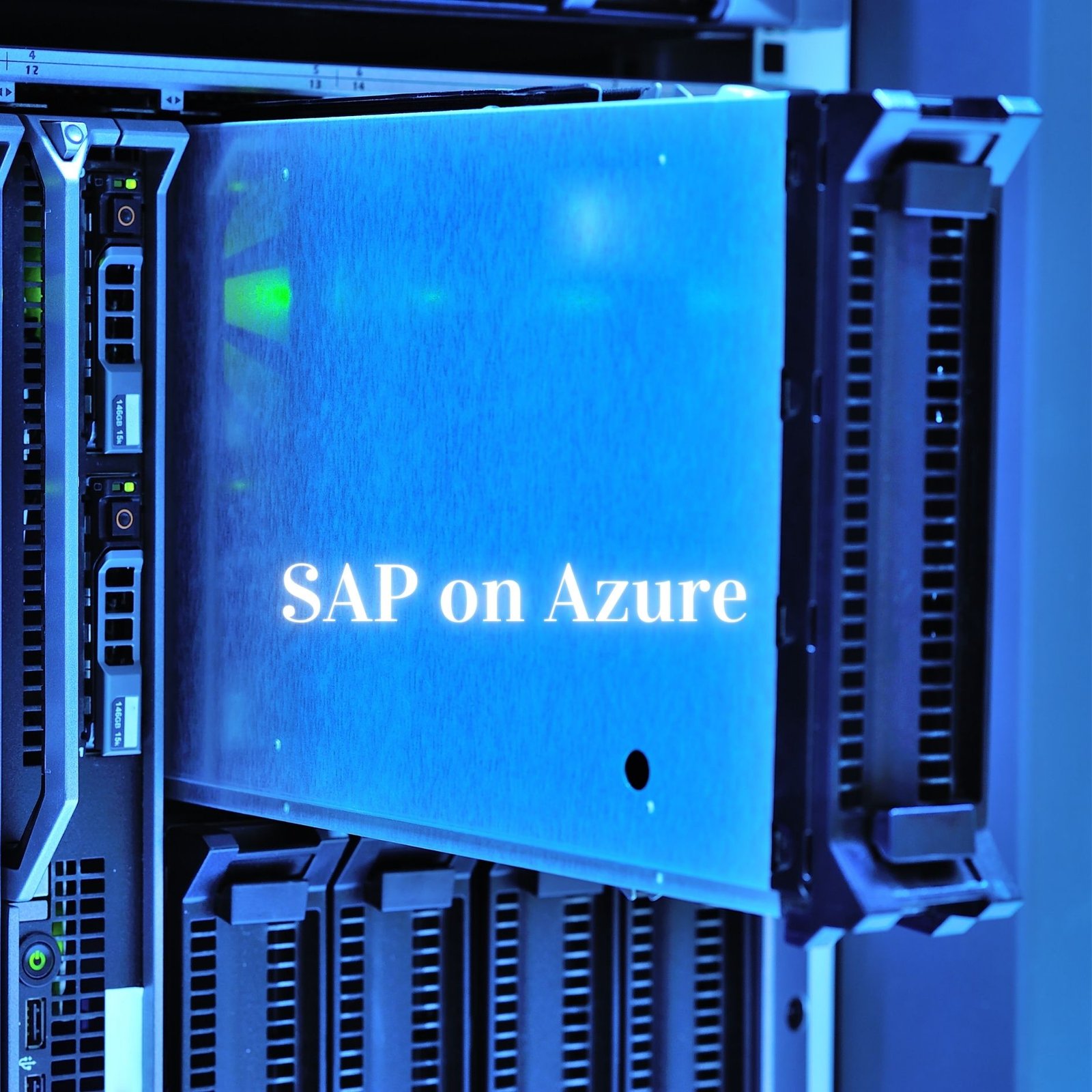Table of Contents
1. Introduction
In today’s fast-paced business world, companies rely on Systems, Applications, and Products workloads for enterprise resource planning (ERP), financial management, customer relationship management (CRM), and supply chain operations. However, managing Systems, Applications, and Products workloads efficiently is challenging, especially when dealing with performance, scalability, and cost-effectiveness.
Enter Microsoft Azure, a robust cloud platform offering unparalleled excellence in SAP workload optimization. With high-performance infrastructure, advanced security, and AI-powered analytics, Azure enables businesses to run Systems, Applications, and Products efficiently and cost-effectively.
This article explores how Microsoft Azure enhances SAP workloads, providing improved scalability, cost savings, security, and AI-driven insights for enterprises looking to stay ahead in the competitive landscape.
2. Understanding SAP Workloads
What Are SAP Workloads?
Systems, Applications, and Products workloads refer to the collection of business-critical applications, databases, and services running within a Systems, Applications, and Products ecosystem. These include:
- SAP S/4HANA – Intelligent ERP for real-time business insights
- SAP Business Suite – Traditional ERP system for business operations
- SAP HANA – High-performance database management system
- SAP BW/4HANA – Data warehousing for advanced analytics
Challenges in Managing SAP Workloads
Despite their benefits, Systems, Applications, and Products workloads pose several challenges:
- High operational costs – Maintaining Systems, Applications, and Products systems on-premises can be expensive
- Scalability issues – Sudden workload spikes require a scalable infrastructure
- Performance bottlenecks – Managing large datasets and real-time transactions can strain resources
- Security risks – Protecting sensitive enterprise data requires advanced security measures
Key Requirements for Running SAP Efficiently
To ensure optimal performance, Systems, Applications, and Products workloads need:
- Scalable computing power
- High-speed networking and storage
- Robust security and compliance
3. Why Choose Microsoft Azure for SAP?
Benefits of Azure for SAP Workloads
Microsoft Azure offers several compelling advantages for businesses running Systems, Applications, and Products workloads, including:
- Unmatched Scalability – Easily scale Systems, Applications, and Products workloads up or down based on business needs.
- Cost Efficiency – Reduce infrastructure costs with a pay-as-you-go model.
- Global Reach – Deploy Systems, Applications, and Products workloads across Microsoft’s vast network of data centres in over 60 regions worldwide.
- Security & Compliance – Enterprise-grade security with built-in compliance frameworks.
- AI & Analytics Integration – Leverage AI-driven insights to optimize Systems, Applications, and Products processes and decision-making.
Key Features of Azure Tailored for SAP
Microsoft Azure is specifically designed to handle Systems, Applications, and Products workloads with features such as:
- Azure Virtual Machines for SAP HANA – High-performance, memory-optimized VMs.
- Azure NetApp Files – Enterprise-grade storage with low-latency access.
- Azure Backup & Disaster Recovery – Automated backups and quick failover.
- Azure Monitor – Real-time performance monitoring and diagnostics.
With Microsoft’s ongoing collaboration with Systems, Applications, and Products, businesses can confidently run their mission-critical applications on Azure without compromise.
4. Microsoft Azure SAP-Certified Infrastructure
SAP HANA on Azure
Systems, Applications, and Products HANA require high-performance computing power, and Azure delivers industry-leading infrastructure to meet these demands. Key benefits include:
- VMs optimized for SAP HANA with up to 24 TB RAM.
- Azure Large Instances for handling massive SAP workloads.
- On-demand scaling to accommodate business growth.
High-Performance Computing Capabilities
Microsoft Azure provides a robust cloud environment for Systems, Applications, and Products workloads, ensuring:
- Low-latency performance for real-time data processing.
- Enhanced network speeds with Azure ExpressRoute.
- Data storage optimization with Azure Ultra Disk and SSD-based solutions.
Scalability and Flexibility Advantages
One of Azure’s standout features is elastic scalability, allowing businesses to:
- Scale horizontally and vertically based on workload intensity.
- Pay only for the resources used, reducing unnecessary expenses.
- Integrate with hybrid and multi-cloud environments for greater flexibility.
With its SAP-certified infrastructure, Azure ensures seamless performance and operational efficiency for enterprises running Systems, Applications, and Products.
5. Security and Compliance for SAP on Azure
Enterprise-Grade Security Features
Microsoft Azure provides a multi-layered security approach for Systems, Applications, and Products workloads, including:
- Identity & Access Management (IAM) – Secure authentication with Azure AD.
- Data Encryption – End-to-end encryption for Systems, Applications, and Products databases.
- Threat Protection – AI-powered threat detection with Microsoft Defender.
- Zero Trust Security – Continuous monitoring to prevent unauthorized access.
Compliance with Industry Standards
Businesses operating in highly regulated industries benefit from Azure’s built-in compliance certifications, including:
- GDPR (General Data Protection Regulation)
- ISO 27001 (International Security Standard)
- SOC 2 (System & Organization Controls)
- HIPAA (Health Insurance Portability and Accountability Act)
Azure’s compliance framework ensures that Systems, Applications, and Products workloads meet global regulatory standards, reducing risks for enterprises.
Disaster Recovery and Backup Solutions
Unexpected disruptions can be costly, but Azure offers robust disaster recovery solutions, including:
- Azure Backup – Automated, encrypted backups for Systems, Applications, and Products data.
- Azure Site Recovery – Quick failover to a secondary region during disasters.
- Geo-Redundant Storage (GRS) – Data replication across multiple locations.
With these features, Azure’s systems, applications, and products workloads remain resilient against cyber threats, hardware failures, and natural disasters.
6. Cost Optimization with Azure for SAP
Pay-As-You-Go Pricing and Cost Efficiency
One of Azure’s key advantages is its cost-effective pricing model. Businesses can:
- Pay only for what they use instead of maintaining expensive on-premises infrastructure.
- Optimize spending with Azure Reserved Instances for long-term cost savings.
- Use Azure Hybrid Benefit to reduce licensing costs by up to 85%.
Reducing Operational Costs with Automation
Azure’s automation tools help businesses lower Systems, Applications, and Products workload management costs by:
- Auto-scaling resources based on workload demand.
- Automated patching & updates to minimize manual intervention.
- AI-powered insights to optimize cost allocation.
7. Performance and Reliability Enhancements
High Availability (HA) and Disaster Recovery (DR)
Microsoft Azure provides 99.99% uptime, ensuring uninterrupted performance of systems, applications, and products. Key features include:
- SAP HANA Replication – Real-time data replication for high availability.
- Load Balancing – Ensures even distribution of workloads for better performance.
- Automated Failover – Ensures system recovery in case of failure.
Data Center Resilience and Global Network Strength
With over 60+ Azure regions, businesses can deploy Systems, Applications, and Products workloads closer to their users, leading to:
- Reduced latency for real-time Systems, Applications, and Products transactions.
- Seamless disaster recovery with geo-redundant backup solutions.
- Continuous monitoring to prevent system failures.
Best Practices for Systems, Applications, and Products Performance Optimization
To maximize Systems, Applications, and Products performance on Azure, enterprises should:
- Use Azure’s high-performance VMs for faster data processing.
- Leverage Azure ExpressRoute for dedicated, low-latency network connectivity.
- Implement caching strategies to optimize Systems, Applications, and Products query execution times.
Azure’s robust performance-enhancing capabilities ensure that Systems, Applications, and Products workloads operate at peak efficiency, even during high-demand periods.
8. AI and Machine Learning Capabilities in Azure for SAP
AI-Driven Analytics for Systems, Applications, and Products Data
One of the standout benefits of running Systems, Applications, and Products on Azure is its integration with AI and machine learning. Microsoft Azure enables businesses to:
- Analyze SAP data in real-time using AI-powered insights.
- Automate financial forecasting with predictive analytics.
- Detect anomalies and fraud with intelligent data analysis.
Automation and Predictive Maintenance
Azure’s AI and automation capabilities reduce manual workload and improve operational efficiency by:
- Automating routine SAP tasks, such as data entry and reconciliation.
- Predicting potential system failures before they happen.
- Enhancing customer experiences with AI-driven chatbots and analytics.
Real-World Use Cases of AI with Systems, Applications, and Products on Azure
- Retail Industry: AI-powered demand forecasting for inventory management.
- Finance Sector: Automated fraud detection using machine learning.
- Manufacturing: Predictive maintenance of equipment based on Systems, Applications, and Products sensor data.
By combining Azure’s AI tools with Systems, Applications, and Products workloads, businesses gain faster decision-making capabilities and improved operational efficiency.
9. Migration Strategies for Systems, Applications, and Products to Azure
Steps to Migrate Systems, Applications, and Products Workloads to Azure
Migrating Systems, Applications, and Products workloads to Azure can be complex, but following these steps ensures a smooth transition:
- Assess Current Infrastructure – Identify workloads suitable for Azure migration.
- Plan Migration Strategy – Choose between re-hosting, re-platforming, or re-architecting SAP.
- Set Up Azure Environment – Deploy Azure Virtual Machines and configure SAP infrastructure.
- Migrate and Test – Transfer Systems, Applications, and Products data and applications, then conduct rigorous testing.
- Optimize and Go Live – Fine-tune performance settings and launch Systems, Applications, and Products on Azure.
Best Practices for a Seamless Transition
- Use Azure Migrate for automated workload assessment and migration planning.
- Implement Systems, Applications, and Products HANA Large Instances for high-performance computing.
- Conduct load testing before full-scale deployment.
Common Pitfalls and How to Avoid Them
- Lack of proper planning – Solution: Conduct a thorough workload assessment.
- Ignoring security considerations – Solution: Use Azure’s built-in security tools.
- Underestimating costs – Solution: Leverage Azure Cost Management tools.
By following these strategies, businesses can migrate Systems, Applications, and Products workloads to Azure with minimal disruption and maximum efficiency.
10. Hybrid Cloud and Multi-Cloud Support
Integrating Systems, Applications, and Products with Hybrid and Multi-Cloud Environments
Many enterprises require a hybrid approach when running Systems, Applications, and Products workloads. Azure supports seamless integration with on-premises and multi-cloud environments through:
- Azure Arc – Enables Systems, Applications, and Products management across on-premises, Azure, and other clouds.
- Azure ExpressRoute – Provides private, high-speed connectivity for hybrid SAP environments.
- Multi-Cloud Strategy – Allows Systems, Applications, and Products workloads to be distributed across Azure, AWS, and Google Cloud.
How Azure Arc Enhances SAP Workloads
Azure Arc extends Azure’s capabilities to hybrid and multi-cloud environments by:
- Centralizing Systems, Applications, and Products workload management across different platforms.
- Ensuring consistent security and compliance across all deployments.
- Providing AI-powered automation for Systems, Applications, and Products operations.
Benefits of a Hybrid Approach for SAP
- Flexibility: Businesses can run critical Systems, Applications, and Products workloads on-premises while utilizing Azure’s cloud scalability.
- Cost Optimization: Keep sensitive data on-premises while leveraging Azure’s cloud for processing and analytics.
- Enhanced Disaster Recovery: Azure can be used as a backup solution for on-premises SAP systems.
With Azure’s hybrid and multi-cloud capabilities, businesses can maximize the efficiency, flexibility, and cost savings of their Systems, Applications, and Products workloads.
11. SAP on Azure: Case Studies and Success Stories
How Businesses Have Transformed Using Azure for SAP
Several global enterprises have successfully migrated their Systems, Applications, and Products workloads to Azure, benefiting from:
- Increased system performance and reliability
- Cost savings from reduced infrastructure expenses
- AI-driven insights for better decision-making
Key Takeaways from Real-World Implementations
Example 1: Global Manufacturing Company
- Migrated Systems, Applications, and Products from HANA to Azure, reducing infrastructure costs by 40%.
- Improved real-time data analytics with Azure AI integration.
Example 2: Financial Services Enterprise
- Transitioned Systems, Applications, and Products workloads to Azure hybrid cloud.
- Increased system uptime to 99.99% using Azure’s HA/DR solutions.
Lessons Learned from Successful Migrations
- Plan to avoid downtime.
- Leverage automation for cost reduction.
- Use AI-powered analytics to optimize the performance of systems, applications, and products.
By moving to Azure, businesses have gained cost savings, performance boosts, and advanced analytics capabilities.
12. Tools and Resources for Managing SAP on Azure
Azure Monitor and Security Tools
To ensure Systems, Applications, and Products workloads run smoothly, businesses can use:
- Azure Monitor – Provides real-time performance tracking.
- Azure Security Center – Protects against cyber threats and vulnerabilities.
- Azure Sentinel – AI-driven security analytics and threat detection.
SAP on Azure Resource Manager Templates
Azure provides pre-configured Systems, Applications, and Products deployment templates, enabling businesses to:
- Quickly set up Systems, Applications, and Products infrastructure on Azure.
- Automate configurations for optimized performance.
- Ensure compliance with best practices.
Best Third-Party Integrations for SAP Management
- ServiceNow – Automates systems, applications, and Product workflow processes.
- Splunk for SAP – Enhances security monitoring.
- Dynatrace – Provides AI-driven performance analytics for Azure systems, applications, and products.
With these tools and integrations, managing Systems, Applications, and Products workloads on Azure becomes simpler, faster, and more secure.
13. Future Trends: SAP and Azure Innovations
Emerging Technologies in Cloud Computing and Systems, Applications, and Products
The future of Systems, Applications, and Products on Azure is driven by cutting-edge innovations, including:
- AI-powered SAP automation for predictive analytics.
- Edge computing is used to process data for real-time systems, applications, and products.
- Blockchain integration for secure supply chain management.
The Role of AI, IoT, and Blockchain in Systems, Applications, and Products
- AI – Automates Systems, Applications, and Product processes and enhances decision-making.
- IoT – Connects Systems, Applications, and Product workloads with real-time sensor data.
- Blockchain – Improves transparency in Systems, Applications, and Products supply chain management.
How Microsoft is Shaping the Future of SAP on Azure
Microsoft continues to invest in new technologies, ensuring that Systems, Applications, and Products on Azure remain a leader in cloud innovation.
14. Conclusion
Microsoft Azure provides a powerful, secure, and cost-effective cloud platform for Systems, Applications, and Products workloads. From high-performance computing and AI-driven analytics to cost optimization and security enhancements, Azure delivers unmatched benefits for businesses running Systems, Applications, and Products.
By migrating Systems, Applications, and Products workloads to Azure, businesses gain:
- Scalability and flexibility
- Enhanced security and compliance
- AI-driven automation and analytics
- Reduced infrastructure costs
Now is the time to optimize your Systems, Applications, and Products workloads with Microsoft Azure and drive business innovation, efficiency, and growth.









